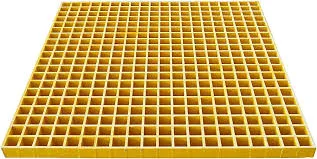
-
 Afrikaans
Afrikaans -
 Albanian
Albanian -
 Amharic
Amharic -
 Arabic
Arabic -
 Armenian
Armenian -
 Azerbaijani
Azerbaijani -
 Basque
Basque -
 Belarusian
Belarusian -
 Bengali
Bengali -
 Bosnian
Bosnian -
 Bulgarian
Bulgarian -
 Catalan
Catalan -
 Cebuano
Cebuano -
 China
China -
 China (Taiwan)
China (Taiwan) -
 Corsican
Corsican -
 Croatian
Croatian -
 Czech
Czech -
 Danish
Danish -
 Dutch
Dutch -
 English
English -
 Esperanto
Esperanto -
 Estonian
Estonian -
 Finnish
Finnish -
 French
French -
 Frisian
Frisian -
 Galician
Galician -
 Georgian
Georgian -
 German
German -
 Greek
Greek -
 Gujarati
Gujarati -
 Haitian Creole
Haitian Creole -
 hausa
hausa -
 hawaiian
hawaiian -
 Hebrew
Hebrew -
 Hindi
Hindi -
 Miao
Miao -
 Hungarian
Hungarian -
 Icelandic
Icelandic -
 igbo
igbo -
 Indonesian
Indonesian -
 irish
irish -
 Italian
Italian -
 Japanese
Japanese -
 Javanese
Javanese -
 Kannada
Kannada -
 kazakh
kazakh -
 Khmer
Khmer -
 Rwandese
Rwandese -
 Korean
Korean -
 Kurdish
Kurdish -
 Kyrgyz
Kyrgyz -
 Lao
Lao -
 Latin
Latin -
 Latvian
Latvian -
 Lithuanian
Lithuanian -
 Luxembourgish
Luxembourgish -
 Macedonian
Macedonian -
 Malgashi
Malgashi -
 Malay
Malay -
 Malayalam
Malayalam -
 Maltese
Maltese -
 Maori
Maori -
 Marathi
Marathi -
 Mongolian
Mongolian -
 Myanmar
Myanmar -
 Nepali
Nepali -
 Norwegian
Norwegian -
 Norwegian
Norwegian -
 Occitan
Occitan -
 Pashto
Pashto -
 Persian
Persian -
 Polish
Polish -
 Portuguese
Portuguese -
 Punjabi
Punjabi -
 Romanian
Romanian -
 Russian
Russian -
 Samoan
Samoan -
 Scottish Gaelic
Scottish Gaelic -
 Serbian
Serbian -
 Sesotho
Sesotho -
 Shona
Shona -
 Sindhi
Sindhi -
 Sinhala
Sinhala -
 Slovak
Slovak -
 Slovenian
Slovenian -
 Somali
Somali -
 Spanish
Spanish -
 Sundanese
Sundanese -
 Swahili
Swahili -
 Swedish
Swedish -
 Tagalog
Tagalog -
 Tajik
Tajik -
 Tamil
Tamil -
 Tatar
Tatar -
 Telugu
Telugu -
 Thai
Thai -
 Turkish
Turkish -
 Turkmen
Turkmen -
 Ukrainian
Ukrainian -
 Urdu
Urdu -
 Uighur
Uighur -
 Uzbek
Uzbek -
 Vietnamese
Vietnamese -
 Welsh
Welsh -
 Bantu
Bantu -
 Yiddish
Yiddish -
 Yoruba
Yoruba -
 Zulu
Zulu
chemical products for frp applications a comprehensive guide ...
Chemical Products for FRP Applications A Comprehensive Guide
Fiber-reinforced plastics (FRP) have revolutionized various industries, offering a combination of lightweight properties, high strength, and excellent corrosion resistance. As demand for FRP products continues to grow, a comprehensive understanding of the chemical products used in FRP applications is essential for engineers, designers, and manufacturers alike. This guide delves into the key chemical products that facilitate the development and production of FRP components.
1. Resins The Backbone of FRP Composites
At the heart of any FRP application is the resin. This thermosetting polymer not only binds the reinforcing fibers but also provides structural integrity. The most commonly used resins in FRP applications include
- Polyester Resins These are perhaps the most widely used due to their cost-effectiveness and versatility. Unsaturated polyester resins can be molded into various shapes and are ideal for a range of applications, from boats to automotive parts.
- Vinyl Ester Resins Offering superior chemical resistance and mechanical properties, vinyl ester resins are used in harsher environments. They are often preferred in industries such as chemical processing and wastewater treatment.
- Epoxy Resins Known for their excellent adhesion, thermal stability, and mechanical properties, epoxy resins are used in high-performance applications. They are preferred in aerospace and marine industries, where weight savings and strength are crucial.
2. Reinforcing Fibers Strength and Durability
The reinforcing fibers are critical to the overall performance of an FRP composite. These fibers enhance the mechanical properties of the resin, providing strength and rigidity. Common types of reinforcing fibers include
- Glass Fibers Widely used due to their balance of strength, weight, and cost, glass fibers are suitable for various FRP applications. They can be woven into mats, chopped, or used in continuous filaments.
- Carbon Fibers Offering much higher strength-to-weight ratios than glass fibers, carbon fibers are often used in high-performance applications, such as aerospace and automotive industries. Their light weight and rigidity make them ideal for applications demanding both performance and efficiency.
- Aramid Fibers Known for their high impact resistance and strength, aramid fibers are utilized in applications such as ballistic armor and high-strength composite structures
.chemical products for frp applications a comprehensive guide ...

3. Additives Enhancing Performance Characteristics
Additives play a crucial role in optimizing the performance of resins and reinforcing materials. They can modify properties such as curing time, viscosity, and UV resistance. Key additives include
- Fillers These materials can enhance the properties of the composite, reduce cost, and improve processing. Common fillers include calcium carbonate, silica, and talc.
- Accelerators and Hardeners These chemicals speed up the curing process of certain resins, ensuring that FRP components can be produced more efficiently.
- pigments and UV Stabilizers Ideal for outdoor applications, these additives enhance aesthetics and improve resistance to degradation from UV exposure.
4. Processing Chemicals Facilitating Production
The production of FRP parts often requires various processing chemicals to aid in the manufacturing processes. These include
- Release Agents Used in moldmaking, release agents prevent the resin from sticking to molds, allowing for easy removal of the finished product.
- Solvents Necessary for thin films and coatings, solvents help achieve the desired viscosity and can assist in clean-up processes.
- Wet-out Agents These facilitate the infusion of resin into the reinforcing fibers, ensuring complete saturation and optimal bonding.
Conclusion
The landscape of chemical products for FRP applications is diverse and ever-evolving. Understanding the various resins, reinforcing fibers, additives, and processing chemicals is vital for the successful design and manufacturing of FRP components. By harnessing these materials effectively, industries can tap into the unique advantages that FRP offers, leading to innovative solutions and improved products across a wide array of applications. As technology advances, the development of new chemical products will continue to expand the possibilities of what can be achieved with fiber-reinforced plastics.









